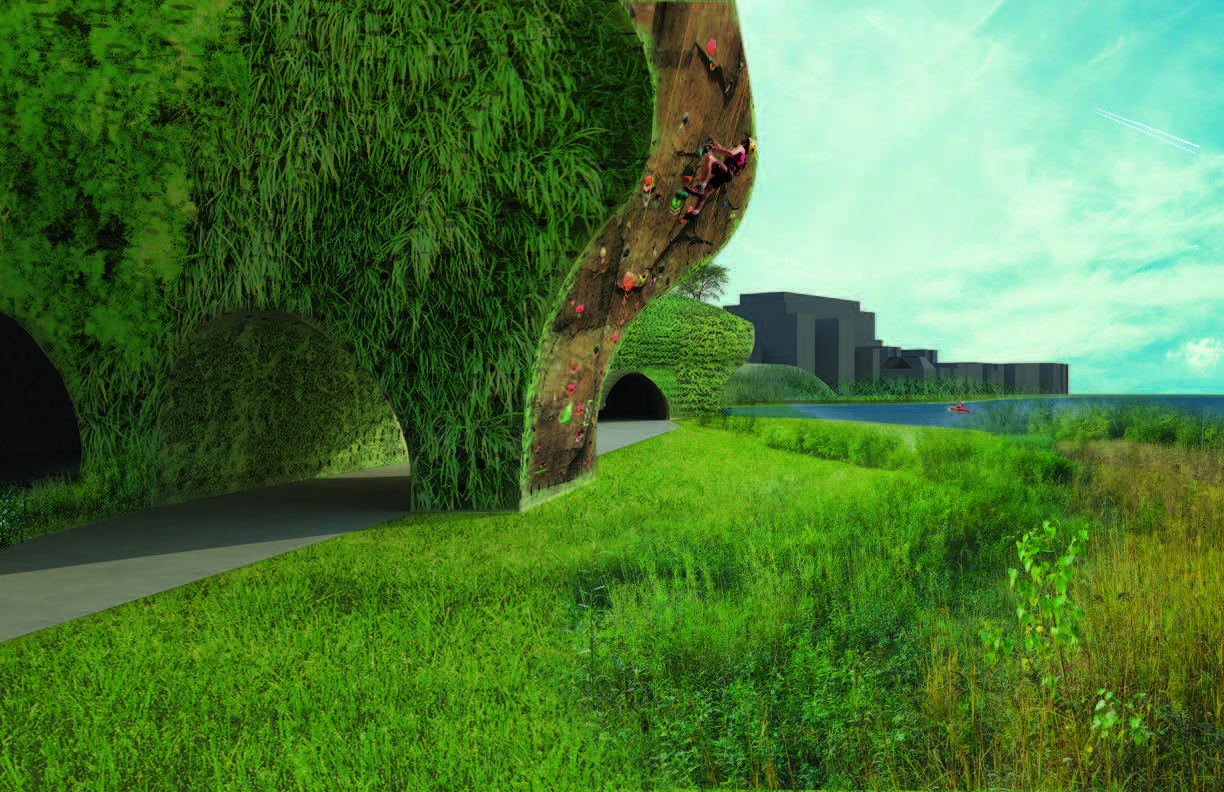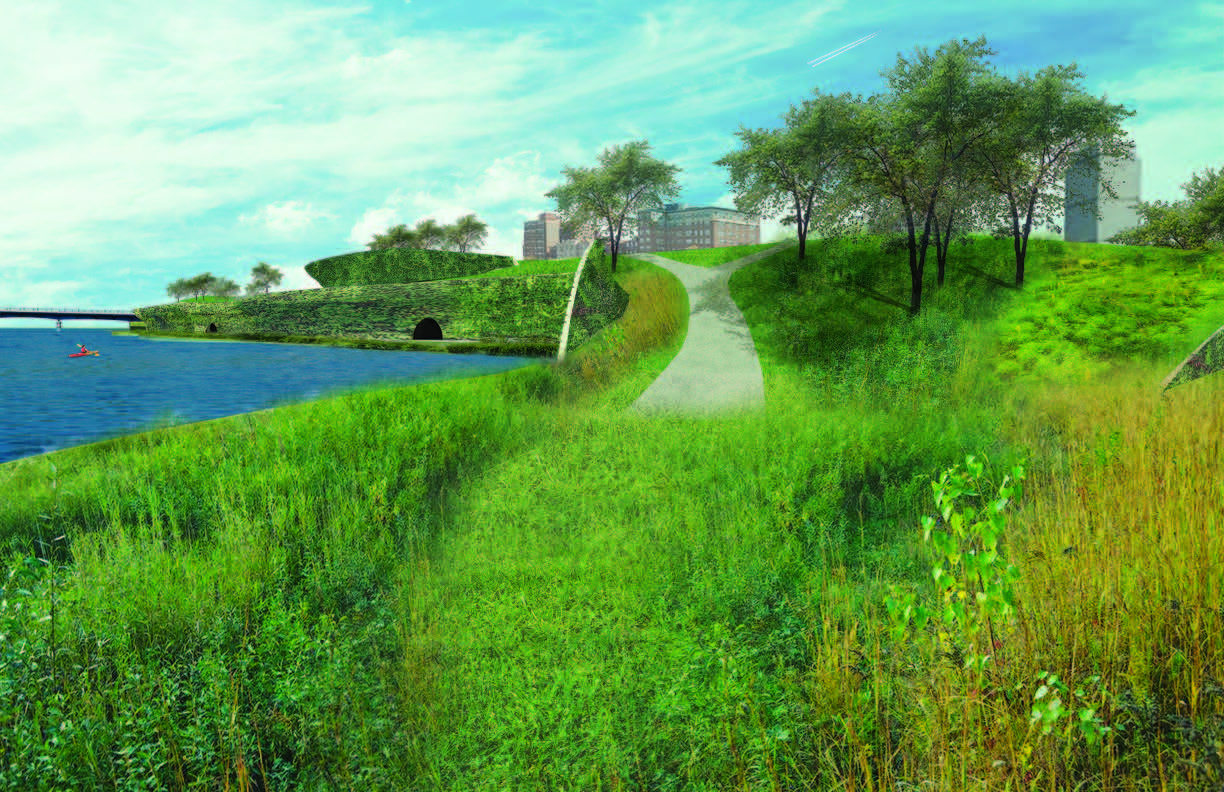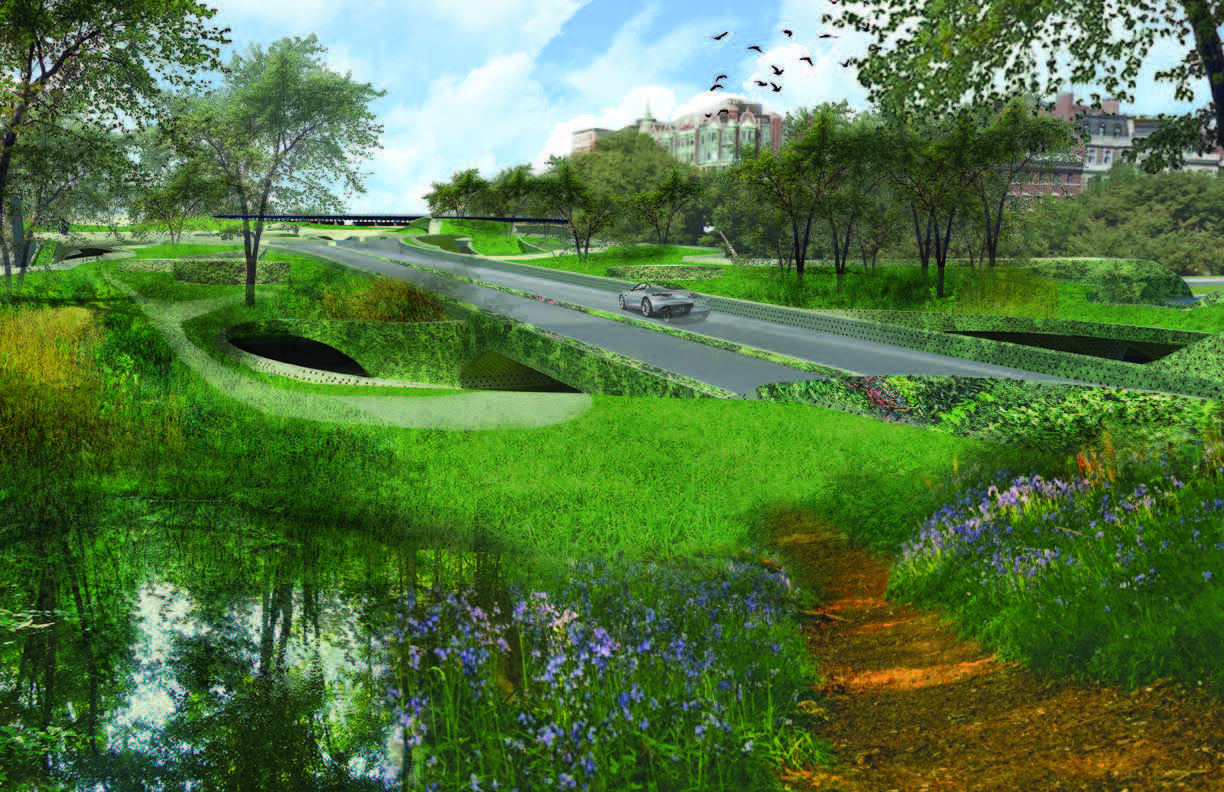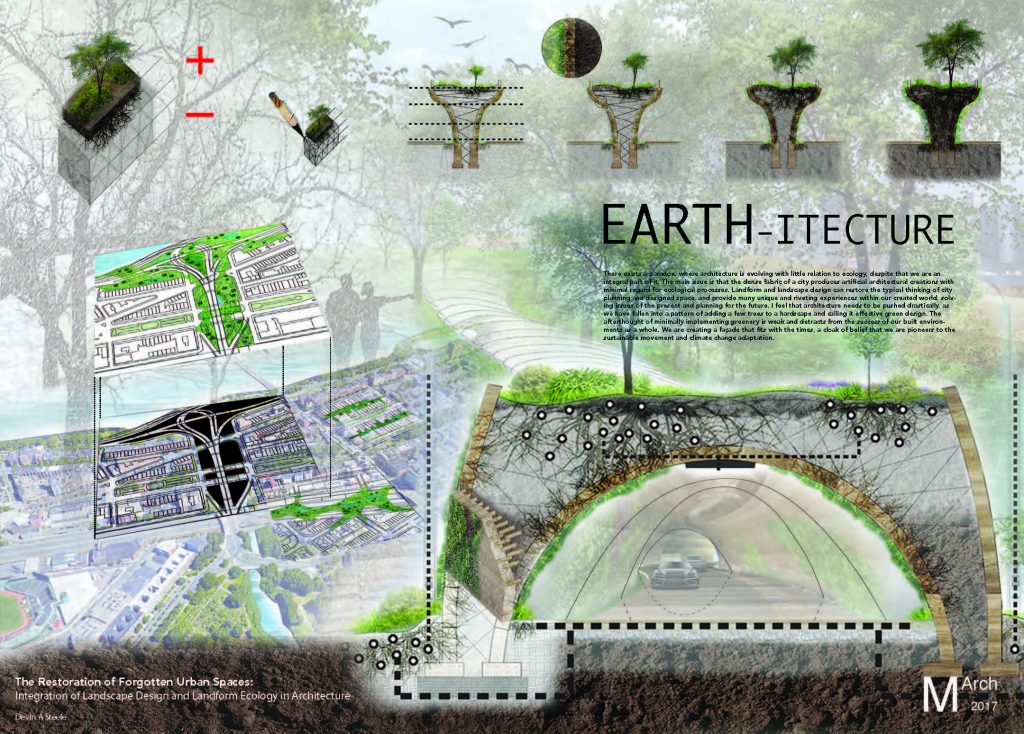This thesis explores strategies for restoring forgotten urban spaces through a synthesis of landscape design, landform ecology and architecture.

There exists a paradox, where architecture is evolving with little relation to ecology, despite that we are an integral part of it. The main issue is that the dense fabric of a city produces artificial architectural creations with minimal regard for ecological processes. Landform and landscape design can restore the typical thinking of city planning and designed space, and provide many unique and riveting experiences within our created world, solving issues of the present and planning for the future. I feel that architecture needs to be pushed drastically, as we have fallen into a pattern of adding a few trees to a hardscape and calling it effective green design. The afterthought of minimally implementing greenery is weak and detracts from the success of our built environments as a whole. We are creating a façade that fits with the times, a cloak of belief that we are pioneers to the sustainable movement and climate change adaptation.

Everything in the world is inter-connected in an ever-adapting symbiosis between organism and environment. We came from the natural world, yet are actively erasing it from our existence. Cities have corrupted the natural ecological order, leading to problems with irrigation, evaporation, heating, cooling, air and water quality, and many more. Burning fossil fuels has overloaded the global carbon cycle, triggering dramatic changes to climate, ice coverage, weather patterns, agricultural yields, sea level stability, government budgets and worldwide refugee statistics. Our urban fabric is part of a global ecosystem, yet it is not contributing to the overall health of the planet; it is acting like a parasite actively sucking life away from it. The integration of new ecosystems will aid in the provisioning of food and water, regulating climate, air and water quality, and providing ecological support. Other potential benefits include generating habitats for wildlife, and addressing aspects of climate change, such as mitigating the urban heat island effect and rising sea levels. Development and expansion of the urban hardscape will never truly be ecological sustainable until we break it apart and connect back to the landforms beneath. Introducing a greenway network into cities will spawn beneficial affects on social health, urban and natural ecosystems. This ecological network could loosen the congestion attributed to population increase, and generate economic prosperity in the process. By elevating certain levels above the street-scape, we could introduce a second storefront level, doubling the available business opportunities and planning for the future influx in urban population, while simultaneously healing our cities and reconnecting them back to the natural ecological order. With an interconnected series of green spaces and community areas, we can attract people back into the city while generating large amounts of revenue and stability for the future. Instead of building on the land, we can effectively build the land. I invite you to please look at my actual Master of Architecture Thesis, in full at: https://issuu.com/devinsteele/docs/thesis_book_compressed to better understand my thoughts, research, and proposal. I find it a near impossible task to narrow down an entire Thesis into 3 images under 1 MB. Thank you for your consideration.






